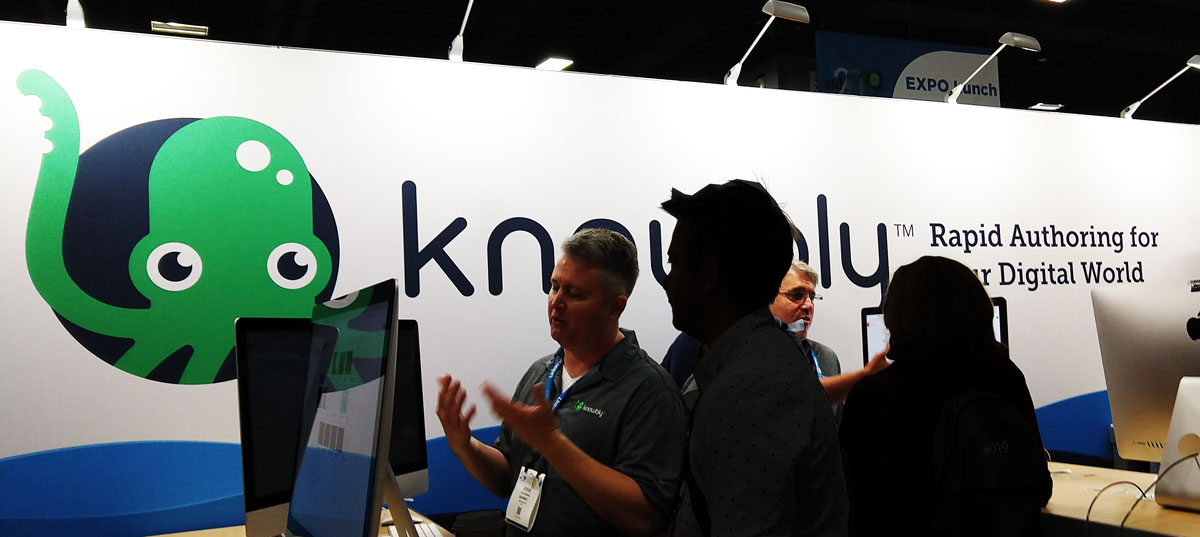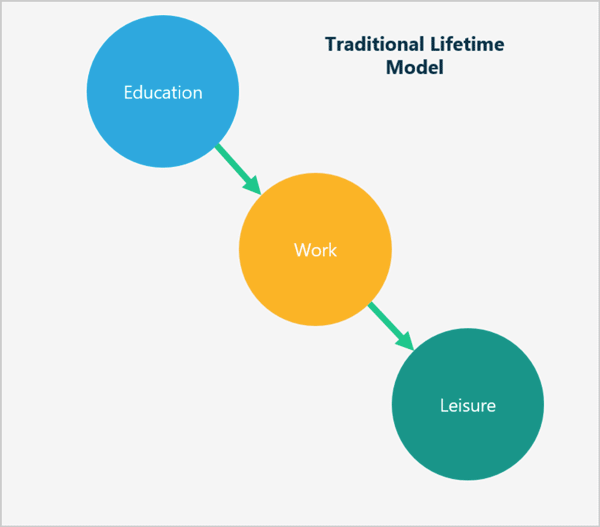ATD International Conference 2019 – Rabid for Rapid Authoring

We’re back from another successful ATD conference, and as excited as ever about the direction that digital training and digital training authoring is heading! This year’s conference, held in Washington D.C., featured over 10,000 attendees, 400 speakers, and 400 Exhibitors. From the atmosphere, spirited conversation, and jam-packed sessions, the training industry is clearly thriving. We were lucky enough to be an Expo Exhibitor as well as a Session Speaker, and some definite themes emerged from our time at this conference.
- There is a clear need for rapid authoring of training material
- The definition of a training “creator” needs to be expanded
- Employers understand the importance of addressing generational diversity in the workplace
Rabid for Rapid Authoring
One of my favorite quotes from an ATD attendee was, “I’m rabid for rapid authoring!”.
With regard to authoring of training material, we know that efficiency is critical. So much so, that we made it a featured part of our booth messaging.

The fact remains that there will always be more training to create or update than there is time to create it. This was validated by the number of people that approached us, intrigued by the word “rapid”. What we heard was a concern on two different levels regarding the time and effort required to generate training material. The first concern was the most obvious, and that is how long it takes to generate the training modules even after the source material is complete and handed off to the creator. How time-consuming is the process of creating the structure of each lesson page if each lesson page has its own layout and flow? How much effort is it to transfer content from the source material into the application? How intuitive is the process of creating interactives? Can I reuse assets and interactives once I’ve they’ve been added? The positive is that organizations care about the quality of their training, and are not just trying to cram their training into the closest available template. The challenge has been in finding a tool that reduces production time, but also allows for flexibility in design and interactive inclusion. Speed matters, but efficiency means more than just speed.
The second area where people are looking for efficiency is in the onboarding process to an authoring tool. Time spent learning is time NOT spent creating. We heard several accounts of the difficulty of overcoming the learning curve of authoring tools. In most cases, the learning curve halted the entire process of creating new training material or making desperately needed updates to training material. ATD attendees expressed a genuine need for authoring tools that have a short learning curve, allowing the creators to spend as much time generating training rather than reading manuals.
Who Are Your Creators?
Tied closely to the concern of efficiency was a common conversation of expanding the duties of targeted aspects of the creation process to Subject Matter Experts or other stakeholders. I have never personally met an Instructional Designer or Learning Designer that is not working at 110% capacity, regardless of their industry. A logical way to create efficiencies is by expanding the definition of “creator” or “author” within the content creation process in a cloud-based tool. Many organizations are looking for a solution that offers collaboration in the authoring process. Allow the Instructional Designers to concentrate on the pedagogical aspects of the course of course, but provide a gateway for Subject Matter Experts, Trainers, Instructors to be valuable contributors to the process by being able to author the parts of the material that they truly know best.
Addressing Generational Diversity
We were honored to present our seminar titled “Fifty is the New Thirty” to a full room attendees, speaking to both the challenges of the unprecedented levels of generational diversity in the workplace, but also ways to ease these challenges. From the amount of head-nodding by our attendees, this is clearly an area that organizations are aware of, and are more than willing to tackle.
While there is a lot of focus on Millennials and the arrival of Gen-Z employees, workers over 65 are actually the fastest-growing workforce segment. By 2024, workers age 55+ are estimated to make up 24.8% of the labor force, up from 11.9% in 1994.
The Traditional Lifetime Model of Education, Work, Leisure that existed previously is being disrupted and replaced, changing the reality of the work life experience.

Why is this? In middle-adulthood years, rapid technological change and innovation have made it necessary for working-age adults to return to school or seek additional training that will allow them to update their skill set.
In 2015, 37% of full time employees planned to defer retirement for financial reasons. As of 2019 this number has spiked to 52%. All of this means that while we are seeing major differences in the reality of Baby Boomers specifically, it is highly likely that this will be the new normal for the longevity of employees in the workplace. How can this be addressed? While it is important to understand that there is no substitute for knowing your learners, there are a few guidelines that can be followed.
From an organizational perspective:
- Management Style: Managers with diverse teams must understand the mindset of each employee and manage accordingly. Generations both see the world differently and are at different career stages. Gen-Z and Millennials are looking for a coach/mentor to increase their skills and advance their careers. Baby Boomers are looking for management that is ethical, fair, and consistent.
- Culture: Depending on the makeup of your team determine the right combination of individual vs group projects.All generations believe collaboration is key but their preferred approach and trust in authority varies widely. Baby Boomers may be more goal-oriented and respond to professional recognition. Gen-X may prefer to work independently with minimal supervision. Millennials and Gen-Z may require an open, collaborative culture with a lot of perks, but often also require structure to succeed.
- Motivation: Make sure your company values and culture appeal to all generations. What makes an employee join and stay with a company? For example, Baby Boomers may look to pay and benefits, while Millennials may value professional career growth and company values.
From a training perspective:
- Point of Need: Point of need is generation-agnostic. Age barriers don’t exist in an environment where learners can find what they need, when the need it. Curate useful content and deliver it in a way that allows learners to access at any time and on any device. Is your content mobile-friendly? Are you delivering your content in a system that not only allows the learners to take or retake learning at their own pace?
- Supplemental Learning Paths: Selecting a platform that allows learners to create their own supplemental learning path. If we understand that the new reality is life-long learning, do anything possible to foster an environment of knowledge seeking.
- Active Learning: This can be in the approach to learning, allowing the learners to be more involved in the planning, execution, and evaluation of the learning. It can also be in the execution of the learning, making sure that the learning material promotes active vs. passive learning.
- Challenging Learning: Require more of the workers than to sit still while they are told how to perform their duties. Pose questions, start with action. Even put the workers in a position where they are able to leverage their knowledge to create or shape the training content.
- Self-Directed Learning: Compliance requirements aside, allow employees to seek out the parts of the training that they feel they need, and when they find it, control the flow of information. This can be as simple as structuring your learning in a way that includes a navigable Table of Contents, rather than having everything locked into a strict linear sequence. Allow for revisiting, allow the learner to spend as much time as they need. Insert opportunities for review and insert opportunities to check their understanding once they have built up their confidence in a review.
Thank you to everyone who stopped by to talk to us or experience our application for themselves. We always love the conversations that occur at ATD. The passion for learning and learners shines though each year. If you’re interested in trying a new rapid authoring tool, sign up for a free 21-day trial.
